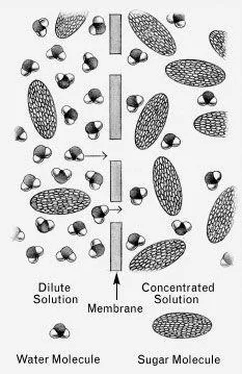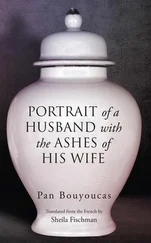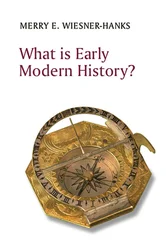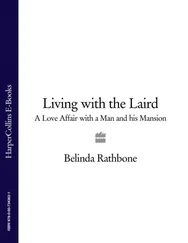Marlene Parrish - What Einstein Told His Cook 2
Здесь есть возможность читать онлайн «Marlene Parrish - What Einstein Told His Cook 2» весь текст электронной книги совершенно бесплатно (целиком полную версию без сокращений). В некоторых случаях можно слушать аудио, скачать через торрент в формате fb2 и присутствует краткое содержание. Год выпуска: 0101, Издательство: W. W. Norton & Company, Жанр: Кулинария, на английском языке. Описание произведения, (предисловие) а так же отзывы посетителей доступны на портале библиотеки ЛибКат.
- Название:What Einstein Told His Cook 2
- Автор:
- Издательство:W. W. Norton & Company
- Жанр:
- Год:0101
- ISBN:нет данных
- Рейтинг книги:4 / 5. Голосов: 1
-
Избранное:Добавить в избранное
- Отзывы:
-
Ваша оценка:
- 80
- 1
- 2
- 3
- 4
- 5
What Einstein Told His Cook 2: краткое содержание, описание и аннотация
Предлагаем к чтению аннотацию, описание, краткое содержание или предисловие (зависит от того, что написал сам автор книги «What Einstein Told His Cook 2»). Если вы не нашли необходимую информацию о книге — напишите в комментариях, мы постараемся отыскать её.
What Einstein Told His Cook 2 — читать онлайн бесплатно полную книгу (весь текст) целиком
Ниже представлен текст книги, разбитый по страницам. Система сохранения места последней прочитанной страницы, позволяет с удобством читать онлайн бесплатно книгу «What Einstein Told His Cook 2», без необходимости каждый раз заново искать на чём Вы остановились. Поставьте закладку, и сможете в любой момент перейти на страницу, на которой закончили чтение.
Интервал:
Закладка:
Chapter Nine • GALLEY GEAR
Does a box of baking soda in the refrigerator kill odors? • Where should I keep my butter? • Why do foods spoil? • Do airport X-rays sterilize foods? • What’s killing my aluminum cookware? • Exactly what is an emulsion? • Is heat the ultimate form of energy? • Why do broilers give such inconsistent results? • In a microwave oven, why don’t two potatoes take twice as long to cook as one potato? • What’s so special about a brick oven for baking breads and pizzas? • Why do glass and metal baking pans require different baking times? • How do ovens cook food? • What is silicone? • How does the shape of a roast affect roasting time? • Does slow, low-temperature cooking use more or less energy than fast, high-temperature cooking?…and more.
Chapter Ten • A FEW LAGNIAPPES FOR THE INSATIABLE INQUIRING MIND
What’s the difference between heat and temperature? • What’s the difference between melting and dissolving? • What is a “natural flavor”? • Why can’t I pour all the milk out of a carton in one try? • What are marshmallows made of? • What does the “percent” number mean on a bar of chocolate? • How does tempering chocolate change its properties? • What is that white, moldy-looking coating on my chocolates? • Is carob a form of chocolate?…and more.
INTRODUCTION
THIS IS THE SECOND food-focused book, and the fourth book overall, in what has turned out to be my “Einstein series,” a series I didn’t anticipate when I started it. But then, I have never planned the courses of my careers. I simply followed the advice of Yogi Berra—whenever I came to a fork in the road, I took it. A succession of forks has led me from teaching and research in nuclear chemistry to textbook authorship, university administration, journalism, and trade book authorship, where you now find me. It was some years ago that I left my academic career to spend my full time writing, a love of mine equal to my loves of science and teaching. The “Einstein” books are one result.
But why would a chemistry professor write about food? For one thing, good food has intrigued me ever since I first encountered it—not at my mother’s knee, but some twenty years later in graduate school. Cornell University’s College of Home Economics (now the Division of Nutritional Sciences) operated a cafeteria in which the products of the students’ cooking classes were sold at prices that a graduate assistant could afford. The menus included foods that I had never before seen, prepared with the care and dedication that only a prospective grade of A could inspire. It was perhaps predictable that I should one day marry my loves of science, teaching, writing, and food, and nestle them between the covers of books. The crowning stroke of fortune was my marriage to a fifth love (in order of chronology, not priority): Marlene Parrish, a restaurant reviewer and culinary journalist full of passion for…well, everything that I have passion for.
IN 1935, when Albert Einstein first walked into his kitchen at 112 Mercer Street in Princeton, New Jersey, he of course saw a stove. But in his mind he also saw an apparatus for transforming the chemical energy in wood or gas into thermal energy and for conveying that thermal energy into a chicken. None of which, of course, diminished his subsequent enjoyment of the chicken, but all of which probably added an extra bit of spice to his dinner, a spice undetected by less scientifically tuned intellects.
Science is a sort of intellectual spice that adds depth and allure to everyday things, not the least of which is food. Food, of course, gives us pleasure and nourishment. But understanding our food—where it came from, what it is made of, what happens when we cook it, all in the contexts of the many experiences and circumstances that make up the world of gastronomy—nourishes our minds and adds immensely to our enjoyment of cooking and eating.
The cliché has it that cooking is chemistry. True, but other sciences bear equally on what goes on in our kitchens. There is the physics of heat transmission, the mechanics of whipping and emulsifying, the microbiology of fermentation, the anatomy of meats, the engineering of utensils and equipment, and the technology of producing and packaging prepared foods—all preceded by the agronomy and animal husbandry that take place on our farms. Kitchen science is not the mere chemistry of cooking. It involves a lot of what I call thinking outside the pot.
This book, then, is a truth-seeking exploration of the farm, the market, and the kitchen by a scientist—not, most assuredly, an Einstein, but a scientist with a congenital curiosity about everything he sees and an urge to share the joy of knowing with others.
THE ENTHUSIASTIC RECEPTION accorded the first volume of What Einstein Told His Cook , together with the limitless number of opportunities for scientific scrutiny in the world of food, has inspired the present sequel. Unlike its predecessor, which focused mainly on specific foods such as sugar, salt, and fats, the present volume is organized into eight major food categories: beverages, dairy and eggs, vegetables, fruits, grains and carbohydrates, seafoods, meats, and herbs and spices. There is also a chapter on kitchen tools and equipment and a concluding chapter offering a handful of lagniappes to please not the diner’s palate but the reader’s inquiring mind.
As she did for the previous book, my wife, Marlene, has wrought and thoroughly tested (on me) about three dozen tempting and accessible recipes that put the scientific principles to work in the home “laboratory.”
And as in the earlier volume, the questions come mainly from readers of my Washington Post column, “Food 101,” and thus represent the concerns of real cooks and consumers, who are often bewildered by the products and labels vying for their attention in today’s multifarious food markets. It is a rare privilege for an author to be in direct correspondence with a cross section of his readers, so that he can tailor his writing to their specific needs and concerns.
One of the most difficult decisions to be made in writing a popular science book is at what level to pitch the scientific explanations. Too high a level will of course lose the less scientifically sophisticated readers. But I see no corresponding danger in writing for those who have studied no science beyond the bare minimum required in most school curricula, and who will readily admit that even that much “didn’t stick.” I therefore write for the latter type of reader without apology, having been told by scientists, engineers, and chefs that even they have learned from my previous books. For that segment of my audience, I dig into my bag of teaching tricks to employ novel explanatory approaches that can generate fresh insights.
Teaching in a book (and that’s what I’m doing) is different from teaching in a classroom. Each Q&A unit in this book, which can be read independently, launches a new issue requiring a new explanation. But science is a continuum; it doesn’t come in discrete pieces, like M&M’s. Hence, when explaining one concept I have often found it necessary to restate, very briefly, a closely related one that had been covered earlier. Otherwise, the unit would be incomplete and unsatisfying. So please note that I do this intentionally. It’s one of my teaching tricks.
I have explained all concepts in nontechnical language, using similes and metaphors related to everyday life whenever possible. Nevertheless, I do present the pertinent scientific terminology in italics within parentheses, so that the reader can relate it to his or her other readings and, if desired, follow up on it in more technical references.
Читать дальшеИнтервал:
Закладка:
Похожие книги на «What Einstein Told His Cook 2»
Представляем Вашему вниманию похожие книги на «What Einstein Told His Cook 2» списком для выбора. Мы отобрали схожую по названию и смыслу литературу в надежде предоставить читателям больше вариантов отыскать новые, интересные, ещё непрочитанные произведения.
Обсуждение, отзывы о книге «What Einstein Told His Cook 2» и просто собственные мнения читателей. Оставьте ваши комментарии, напишите, что Вы думаете о произведении, его смысле или главных героях. Укажите что конкретно понравилось, а что нет, и почему Вы так считаете.












